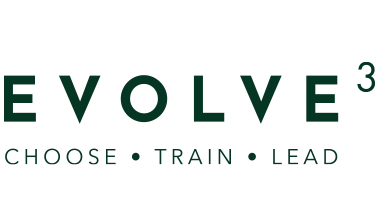
26 Oct Manage your people, not just the money
It’s the people who make all the difference. When you go out for a meal at a restaurant, a bar for a night on the town, or stay at a hotel, it’s the staff who can turn a regular experience into a fantastic one. Of course, you need to track financial performance, but I regularly see a mismatch. It’s almost as though the dollar signs get in the way. In some businesses, I see very sophisticated financial tracking and management focus on generating revenue and containing costs, but nowhere near the same level of management care and focus on getting the right people into the team, onboarding and carefully training them and leading them to be stable, motivated, and productive.
Consider the following:
Key staff recruitment occurring after a 15 to 30min chat (I wouldn’t call it an interview). No other screening, such as: proper reference checking, aptitude testing or skills testing. Certainly not occurring with the same due diligence that finances are controlled.
Then the new hire is given a perfunctory onboarding and minimal training before being left to their own devices on shift to work it out for themselves.
Can you imagine how a business owner or senior manager would react if $75,000 – $100,000 of food or beverage stock was purchased, then it went missing from the cool-room or beverage store? I reckon someone would be getting sacked.
How much does it cost the business when a newly hired key staff member goes missing (resigns) only 3 or 4 months into their employment? How much does it cost if it keeps happening and you go through the process of replacing them 2, 3, 5 or more times in a 12month period? Ouch. That’s going to really cost you. Why don’t some business owners and senior managers react with the same intensity when this happens, as they would with the missing stock?
If you want to be profitable, look after getting the people right, and the money will often look after itself.
Consider some of the costs that will show up on your profit & loss (P&L) if staff turnover gets out of hand:
- Recruitment and training costs: When employees leave, you incur expenses related to recruiting, advertising jobs, screening applicants, conducting interviews, reference checks and onboarding and training the new hires. These costs add up and multiply with high staff turnover rates.
- Administrative costs: Handling the paperwork and logistics associated with employee departures and arrivals is a significant cost, including processing resignations, payroll adjustments, and updating HR records. It can lead to a higher percentage of total wages being spent on these administrative tasks rather than revenue generating activities such as effective shift supervision and positive coaching of staff towards higher performance and job satisfaction.
- Productivity loss: During the transition between employees, there is a drop in productivity as new hires take time to settle and reach the same level of efficiency as the departing employees. In most small to medium sized hospitality businesses, training of new hires is delivered by other team members, who won’t be able to perform their usual role while actively training. So, the productivity hit with high staff turnover occurs with both new and existing team members. This will show up in higher labour costs.
- Training and onboarding: Training new employees involves direct costs for materials, trainers’ time, and facilities. Additionally, it often takes several weeks or even months for new hires to become fully productive. There’s not much benefit in investing in someone’s training if they don’t stay long enough to deliver a return on that investment.
- Negative customer perception: High staff turnover can lead to inconsistent product & service delivery, customer dissatisfaction, and potentially lost revenue. Satisfied and experienced employees tend to provide better customer service, contributing to repeat business, customer loyalty and strong word-of-mouth referrals.
- Overtime and temporary staffing (or warm body recruitment): In some cases, businesses may need to pay excessive overtime to cover shifts or hire temporary staff while positions are vacant, adding to labour costs.
Our industry’s success is intrinsically linked to our ability to provide exceptional customer experiences. This requires a culture of innovation, adaptability, and a commitment to delivering high product and service standards. Such a culture often thrives when employees are engaged, empowered, and motivated.
If the effort and focus that you give financial management isn’t also going towards creating effective human resource systems, you might want to reset your priorities.
Choose: recruitment and selection designed to choose the most suitable, stable staff for the role.
Train: excellent onboarding and skills training to efficiently take staff from green to gun and beyond.
Lead: a leadership culture that encourages open communication, offers professional development opportunities, and cultivates a work environment that inspires innovation.



